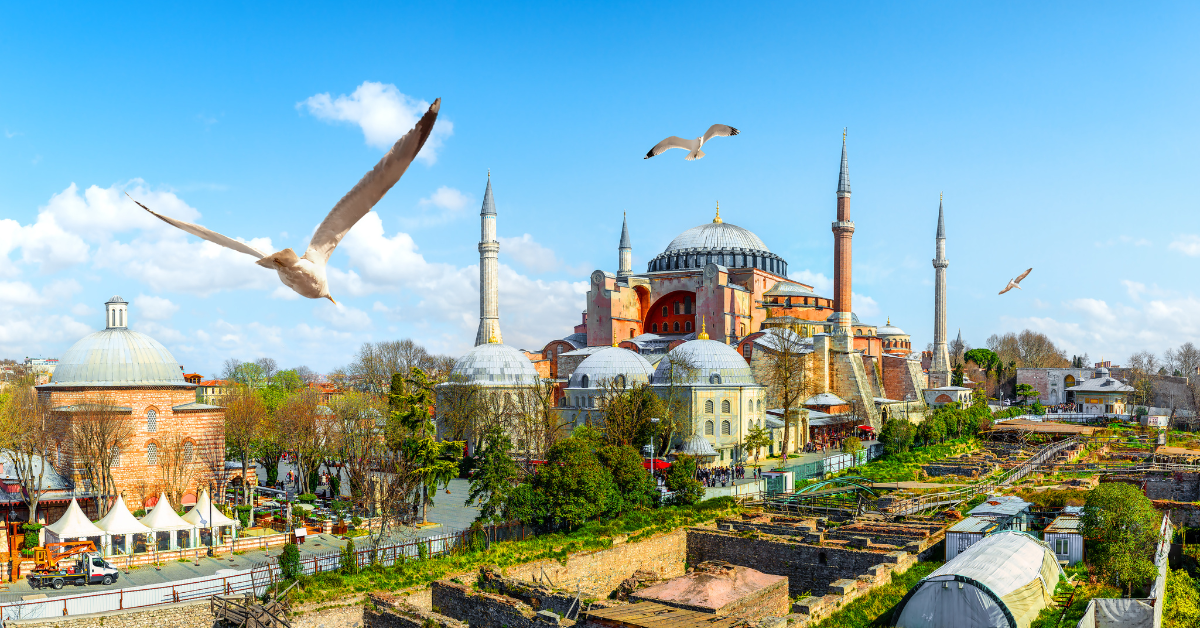Istanbul is a city where history, culture, and sports intersect. While the name is usually written in katakana in Japan, it was once represented in kanji as “斯当歩児.” This unique transcription reflects how Japanese people historically perceived foreign places. Today, Istanbul evokes romance, exotic charm, and football passion for many Japanese.
The Origin of the Kanji Writing “斯当歩児”
Writing Istanbul as “斯当歩児” is an example of phonetic transcription into kanji, a method once used in Japan to approximate the sounds of foreign names. Before the modern era, when introducing foreign places or people, meaning was often ignored in favor of sound.
- 斯 (Shi / Su) → I
- 当 (Tou) → Stan
- 歩児 (Bu-ru) → Bul
Many such transcriptions came through Chinese sources. While not entirely accurate, they functioned as a way for Japanese people to grasp the sounds of distant lands in familiar characters.
Japanese Perceptions of Istanbul
A Crossroads of History and Civilization
As the former capital of the Roman and Ottoman Empires, Istanbul flourished as a center where East and West intersect. For Japanese people, it is often remembered as “a city studied in world history,” deeply imprinted through textbooks and lessons.
A City of Tourism
With landmarks such as the Blue Mosque, Hagia Sophia, and the Bosphorus Strait, Istanbul is rich in attractions. For Japanese travelers, it is strongly associated with “an exotic and enchanting destination,” often featured in travel magazines and TV programs, making it a dream location.
Key Features of Istanbul in Japanese Perception
| Aspect | Main Impression | Example |
|---|---|---|
| History | Crossroads of East and West | Legacy of Constantinople |
| Tourism | Exotic culture and heritage | Hagia Sophia, Blue Mosque |
| Culture | Stage of romance and art | Songs, literature, films |
| Food | City of cuisine | Kebab, Turkish ice cream |
| Sports | Passionate football city | Galatasaray, Fenerbahçe |
Influence of Culture and Music
In the Showa era, popular songs and dramas featuring “Istanbul” left Japanese audiences with an impression of the city as “romantic and mysterious.” In literature and cinema, Istanbul has also been portrayed as a symbolic stage where Eastern and Western influences merge.
Food culture adds another dimension. With Turkish cuisine recognized as one of the world’s three great cuisines, the spread of Turkish restaurants in Japan has created an image of Istanbul as “a city of culinary delight.”
Istanbul as a Sports City
Istanbul is also well known for its sports culture, especially football. Galatasaray, Fenerbahçe, and Beşiktaş are three of Turkey’s most famous clubs, and their stadiums are filled with intensely passionate supporters.
Japanese players have competed in the Turkish league, reinforcing the recognition of Istanbul in Japan as “a city where football fever runs high.” Moreover, the 2005 UEFA Champions League Final, remembered as the “Miracle of Istanbul,” was widely reported in Japan, cementing the city’s status as one of football’s sacred grounds.
The Multifaceted Appeal of Istanbul
| Perspective | Image | Source of Influence |
|---|---|---|
| Education | Stage of world history | School lessons |
| Travel | A dream destination | Magazines, TV |
| Arts | Symbol of romance | Songs, films |
| Food Culture | Diverse culinary appeal | Turkish restaurants |
| Sports | Football’s sacred stage | International tournaments |
Conclusion
Writing Istanbul as “斯当歩児” represents the legacy of phonetic kanji transcription. While no longer used today, it serves as a cultural trace of how Japanese people once tried to understand foreign names through their own writing system.
For the Japanese, Istanbul is far more than just a tourist destination. It is a historic city, a cultural and artistic stage, and a place of intense sports passion. Its multifaceted nature ensures that Istanbul remains impressed upon Japanese minds as “a special place where the weight of history and the vitality of the present coexist.”






